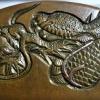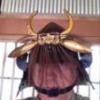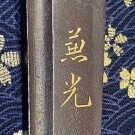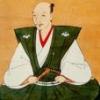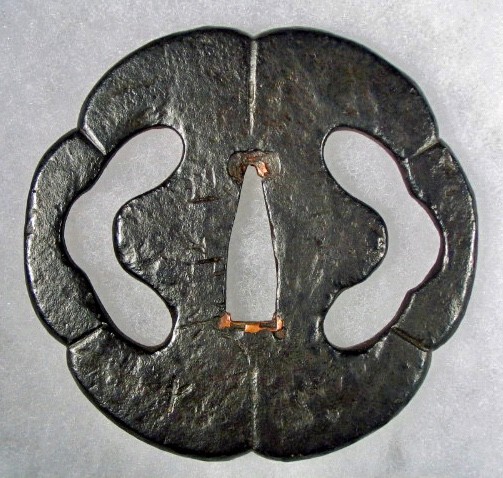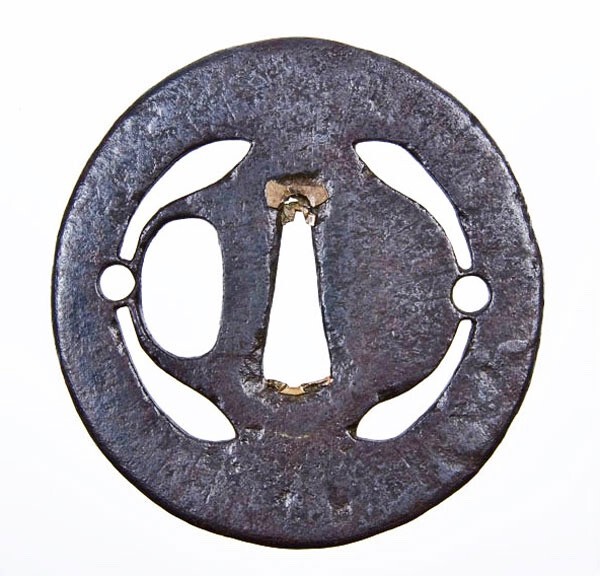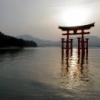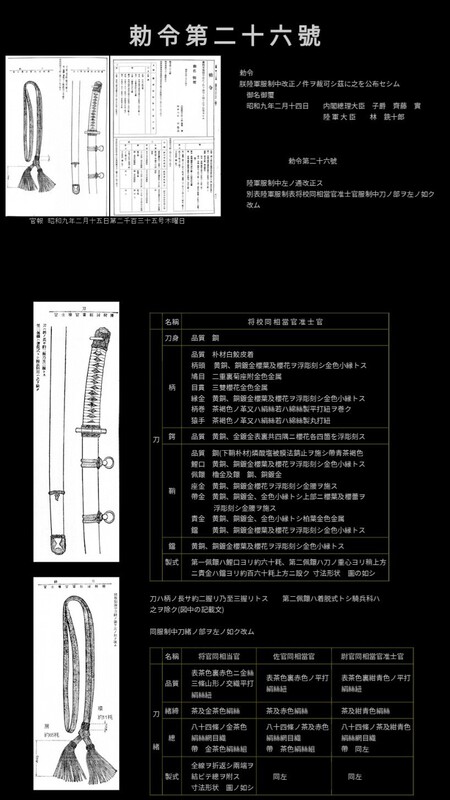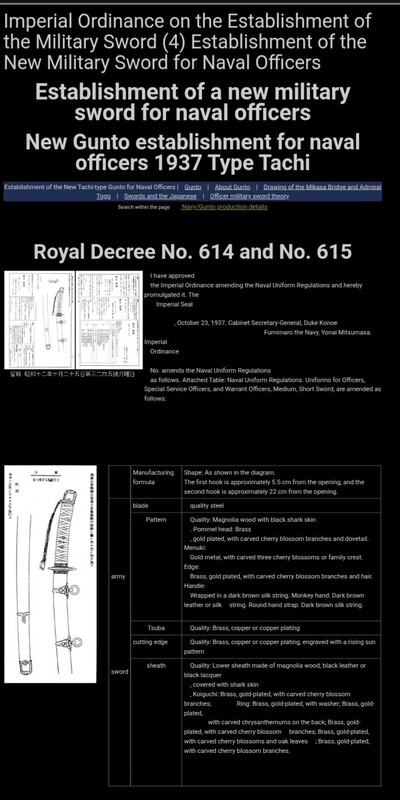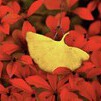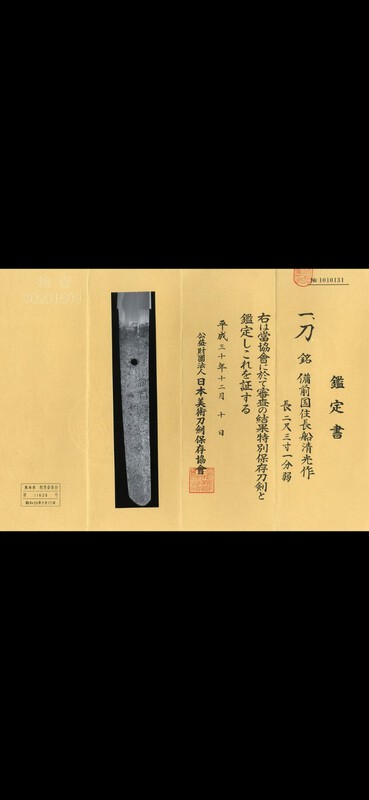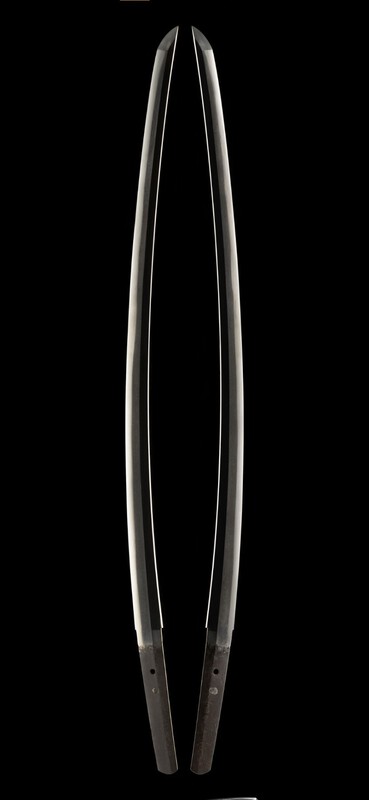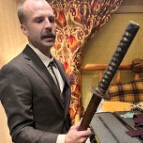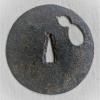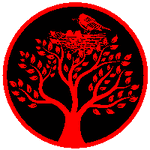Leaderboard
Popular Content
Showing content with the highest reputation on 08/21/2025 in all areas
-
The Nihonto community is a funny thing, on the one hand, we emphasize that we collect "art swords", but in the next breath we're told to accept a previously established order of what's best. It seems the beholder isn't able to choose. So then, rather than quality being subjective, it becomes objective - but all the objective qualities usually relate to utilitarian aspects, which we reject as unimportant to art swords, so the rationale offered only really boils down to a circular "someone else before said so" argument. 🙂 For me, buy what you like, pay what you're prepared to, and don't let other people spoil your enjoyment with their opinion.11 points
-
I think it is necessary to distinguish between the intellectual/academic aspect of studying and the financial realities of collecting. Consider Rayhan's list, which I will paraphrase here: Suriage and/or mumei is okay in pre-Muromachi work and not afterwards. Buy swords in good polish. Make sure any koshirae fits. Buy swords and not papers, but consider papered blades first. Upgrade swords when you can. These rules are mostly about the financial aspect of collecting: bluntly, it is easier to re-sell a blade that meets these criteria. So now let us consider the intellectual/academic aspect. Suriage is less than desirable because it does two things: it changes the sugata and we lose material (both overall and potentially a mei). But if you wanted the "best" ko-Bizen, and you had your pick of every blade in existence, and price was absolutely no object — you would probably pick an ubu zaimei example. So really, from an academic perspective, suriage and mumei are NOT okay, REGARDLESS of the period. We want ubu zaimei. But here practical reality kicks in. We do not have the pick of every blade, we do not have infinite budget, and we have to make some compromises. People should buy the things they can afford and that they like. If someone wants to have a collection of kazu-uchimono, there is nothing intrinsically wrong with that. The problem is when there is a misunderstanding of the commercial realities of the market or a gap in scholarship. If someone thinks a kazu-uchimono is on par from an academic/historical perspective with a Gojo Kanenaga or Tomonari or whatnot, I think this is a failing of their education. But that doesn't mean their kazu-uchimono collection doesn't have a story to tell. You do not have to spend a lot of money to have developed meaningful understanding. I have more than a few things that I bought because I liked them, not because they were "important." But that doesn't mean that I can't understand the nature of what "important" means and why something the example I own is not going to command the highest prices in the market.7 points
-
As for how, my recommendation would be to get lessons with a native Japanese speaker. Personally I use Italki (it's kinda a online tutor marketplace) - it has a range from community tutors for $5-10 per hour, through to professionals with much more expensive rates. Obviously there's apps like Duolingo - these are good for rote learning of vocabulary and familiarisation. I use a app called Kanji Study for, you guessed it 😂 Textbooks are good too - Minna no Nihonto, Sou Matome, Japanese for Busy People etc - but these are best with a teacher - rather than solo learning. If you have a local language exchange group, they can be awesome - but less useful before you have a basic grasp of the language.6 points
-
5 points
-
Yes exactly. I do not understand how we keep having this discussion either. I am not saying anything new. "I want an ko-nie like grains of perfect glittering sand and flowing sunagashi and inazuma and kinsuji and it should definitely have an ichimai-boshi and be ubu kenzen. But it's okay if it's not Juyo." — your problem is not that it's going to be juyo, it's that it's going to be juyo bunkazai. This is a failure of money or maybe understanding of market dynamics. "I bought this out of polish Muromachi suriage mumei wakizashi for $100 on eBay, tell me it's a great sword" — your problem is that there is little for this blade to teach you. This is a failure of studying. If you only have the budget for the second, that is totally fine. And anyone who sneers at you is misguided. There is always a bigger fish, unless you are Godzilla or maybe Mothra, and if you are a kaiju you are not on NMB and definitely not asking this question... Anyways, just don't confuse the first and the second.5 points
-
There's good stats around the JLPT levels, where (assuming you're not already familiar with 2000 Kanji), the learning hours are approximately: N5 (beginner) 350-500 hours of study. N4 (basic) 750-900 hours. N3 (intermediate) 1200-1400 hours. N2 (advanced) 2000-2500 N1 (near fluent *) 3500-4000 hours. At N3, you should be able to have decent conversations socially, but won't understand everything at native pace - and you wouldn't be able to study / work in a Japanese-only environment. N2 is about as far as you need grammar wise. Now, do the maths about how much study time you can put in. I do 5 hours or so weekly, and have been for the last 6 years.5 points
-
I can speak Japanese conversationally and generally say whatever I would want to but it wont be perfect. I think the key for me in the beginning was understanding the grammar and conjugation...the general structures of the language. Once you have that in the bag the words become plug and play. So start at the foundation and then decorate with vocab. As to the second part of your question, I lived in Japan for 7.5 years (and didn't speak a word when I first arrived for college) but the "foundation" part probably took like 1.5 years for me to really lock it in with all the vocabulary I was learning. I could have gone faster but I was also busy just taking in every experience I could and good ol socializing along with my other non-Japanese language college courses. Oh and learning hiragana and katakana is really important because it also gives you all the sounds and syllables to the entire language which will allow you to pronounce things correctly.4 points
-
Hey Forest, I am not fluent in Japanese (yet). I have been studying for several months. I learned Hiragana and Katakana in one or two months give or take, it was really fast and easy. Basically I practiced writing the entire Hiragana/Katakana alphabet over and over again, and used what I wrote as a chart to study. If you watch Japanese TV shows or read manga, any Japanese interest really, you can practice writing words in hiragana and katakana using the chart as a reference (like katana, wakizashi, anime characters, Japanese actors, etc). You will memorize the characters pretty quickly. Kanji is where it gets challenging, it may be easier to learn the spoken language than to learn kanji. As for the spoken language, I have learned some but not really a whole lot. It's actually less difficult than it seems. It can take years to properly learn spoken Japanese and kanji, in my opinion. Usable Japanese though? Not really that difficult to learn.4 points
-
Awesome observations, GP. Well said and brilliantly presented. And many of these “truths” don’t just apply to collecting Nihonto, but also fine art, Chinese ceramics, snuff bottles, antique American Colonial furniture, etc. Just watch a few episodes of Antiques Road show and corollaries to Rayhan’s basic rules are there in one form or another all the time. We collectors are bound by market realities, disposable income, object scarcity and the pursuit of perfection from an artistic and intellectual perspective. Many of these points are being presented here for newbies and collectors with limited budgets who may be in the early stages of their collections. But even more experienced collectors have to face these same realities. For example, I am fortunate to have in my collection some very special and important pieces, but I often have to settle for mumei or suriage swords or examples with orikeishi or gakumei. Do I understand what I have acquired? Absolutely! Would I have preferred to get ubu zaimei Soshu works? You betcha. But the scarcity of those works and the resulting financial forces of the marketplace combined w/my financial realities, mean that I have to make compromises. So chances are that ubu Juyo Soshu Hiromitsu is beyond my grasp, but perhaps a mumei Juyo or Tokubetsu Hozon example might not be. I understand that and I save and network and try to source and buy accordingly. Now might someone with a few Tokubetsu Juyo Hiromitsus look at my puny sword with its naked anonymous nakago and my treasured attribution papers and tell me, “It would have been better to buy a higher-ranked signed piece with perfect jigane.” Or “That’s nice, but it will never go TokuJu or even Juyo.” Yes, and they would not be wrong, but for the fact that those kinds of pieces may be out of my financial reach or not even available to me. Doesn’t mean I bought incorrectly, or failed to study, or that I don’t recognize what makes a great sword. What it means is that I followed another rule that I don’t see in Rayhan’s list: I applied my study and knowledge and bought the best piece I could at my budget. Which is what GP and I believe Rayhan are alluding to. It’s what everyone means when they tell newbies to buy books before blades. While I get that, I am also of the opinion that books are just not enough — you need to see swords, as many as you can and this exposure over time teaches you what is right and wrong, desirable and lamentable. So, I am not sure that even with the best advice in the world it is possible to prevent others from making the same mistakes that Rayhan talked about in his opening post. In fact, I would argue if Rayhan (and me and many of my friends in this hobby) hadn’t made those mistakes, we wouldn’t have the collections we do today. I’m sorry but mistakes are part of the learning process and failure is probably the best teacher there is. What Rayhan I think is trying to say is please be careful that that mistake doesn’t cost you big time. And Ray is not wrong. At the core Ray has offered from his own experience good rules that should be on every collector’s mind whatever their level or interest. Now, here is my take on gakumei and orikeishi mei. Like Hosho, I like them, but before I explain why, I think it’s important to understand the reasons behind them. These are methods designed to honor the sword’s maker; to protect and preserve their connection to the sword, which may have been damaged or was shortened because of changing fashions hundreds of years ago. They are a way to safeguard the facts of the sword’s history for posterity. But like all technologies, they can just as easily be used for evil as for good. In this case, to create a forgery meant to deceive or fool a would be buyer for the financial gain of the seller. So the other rule that that should be applied to all signed works whether original or preserved: always try to match the work with the mei. If you can’t, walk away. So we are back to the need for study. Enough. So, why do I like them? In someways it is linked to my earlier remarks about availability and budget. Often times, folded and framed signatures are great ways to get a signed blade by a great smith at an affordable price. That’s the financial reason. On a deeper more emotional (and intellectual level), I see properly salvaged signatures as an act of love by a former owner from long ago who cared deeply about his sword. So, when I have the chance to own a sword with such a mei that I know is good, I get to feel like I am continuing where that erstwhile owner left off. And when the time comes, I get to pass it on to the next lucky soul who shares that sense of commitment. Below is my naoshi gakumei Sa Yukiyoshi, grandson of Sa Yukihiro, Samonji’s first student. One of only two known signature examples of the smith. It’s not one of my best pieces but it is one of my favorites because somebody went to great trouble to pass its history on to us.4 points
-
Second sword was kodachi purchased a year ago from Ginza Choshuya. This was chosen more with the heart this time. TH, ex-Tsukamoto Museum blade, Yamato and Soshu features. Only shirasaya this time and I asked the dealer to see if Tanobe would add the sayagaki, which he agreed to do. The hataraki on the blade is more than I hoped. With a macro lens and the correct lighting all the fine Nie formations can be seen. Third and most recent purchase was purely acquired with the heart and a modicum of hope that others see what I saw. Horyu papers, out of polish, dated 1308 but Mei for a grand master. Tanobe has seen the tanto and agrees with the 2018 Shinsa panel that more research is needed to ascertain the veracity of the Mei.... at least he didn't give it the kiss of death and proclaim it gimei... so winning. Yes, it's not in the best condition but I bought it as a survivor that is worthy of saving. Not everything in the collection has to tick all the boxes. Would I buy another, probably not, but in this case I can justify it as part of the collection of Koto era swords. The price was OK at a fraction of what an ubu Kamakura era tanto by a big name goes for these days and came with a decent saya. Next purchase will be a statement piece which will check most of the boxes. It's currently being examined by a top level togishi who I hope will accept the commission. I'm certain he will do what is best for the blade to preserve it and bring out the finer detail in the hada which I'm sure is hiding behind the light surface oxidation. Whatever the outcome Tanobe says it has a sugata consistent with the date inscribed on the nakago and the Mei/date will not be removed even if, at the next submission for Shinsa, it fails to yield a positive result.3 points
-
100%. This piece is modeled after Meijin-Shodai work. But the mei is wrong in several areas, the sukashi are not formed correctly, the plate is flat and featureless, and it lacks the dynamism and liveliness that is unmistakable in shoshin work. Some years ago, I uploaded a long article I wrote on this group of smiths to the Articles section on NMB. Yamakichibei has been a special area for me in my research on early Owari Province sword guards, so I can say with a very high degree of confidence (100%) that the tsuba here is not shoshin. Also, much of the content of the Varshavsky page linked in Marcin's post here is riddled with errors, so, it is not a reliable source of information on Yamakichibei works. Below are a few examples of genuine Meijin-Shodai Yamakichibei work. Compare. P.S. The other tsuba Marcin posted an image of from the Varshavsky page is also a later copy. Absolutely not shoshin.3 points
-
3 points
-
3 points
-
3 points
-
Float like a butterfly, sting like a bee. Some great advice above. When you look back, your path will have been different again. I’m lazy, so I only put in those hours when I felt the motivation, wasting much time in between. One rule of thumb that always helped. If you learn a new word, try it out on someone in a real situation within 24 hours, and it’ll stick. がんばって 頑張って Ganbatté!3 points
-
Only mods and administration can delete but you can go to edit and erase everything you just put in please delete. Now I don't remember if you have to have gold membership to use the edit button shouldn't be but I don't know for sure Brian will be along in a while and get you sorted out3 points
-
And not just seeing swords. You have to hold them and observe them under the appropriate lighting. I saw a TJ Den Yukimitsu recently with a fineness in the workmanship that could only be fully appreciated with eyeballs a few inches away from the blade. If this had been displayed behind a glass panel with less than ideal lighting at the wrong angle, the beauty of it would have been missed. When you hear people say they were almost moved to tears by a sword that Yukimitsu was a prime example. Thats when you really get it.3 points
-
Several great FREE downloads right here at NMB in, interestingly enough, the Download Section. Highly recommend the Nihonto Compendium by Sesko. COMPLETELY FREE. If you purchase a few of the on-line resources, I highly recommend Sesko’s A-Z Japanese Swordsmiths, and later the Koto, Shinto & Shin-Shinto Meikan’s for an excellent mei reference. He usually has a few sales throughout the year (around the holidays usually) and many of his references can be had at substantial discounts. I like having those on both my phone and computer.3 points
-
"This is a hobby; it's supposed to be fun!" Ralph Bell, RIP3 points
-
First blade purchased 14 months ago at the Japan Art Expo. A TH Yamato Shikkake in good polish. I played it safe and got a blade in shirasaya with Tanobe sayagaki and custom made Tensho koshirae created by the Osafune Museum workshop. Knew exactly what I was buying, thought about it for 3 days and then made an offer which the dealer accepted. Tanobe said it had Juyo potential and I found out later it had been submitted in 2023 but failed to progress. He suggested to resubmit and since 2023 was a tough year, I may do this in the future. Papers, at least trying myself to get higher level papers, are becoming less of a preoccupation as I progress in the hobby.2 points
-
My purchases is somewhat backward. My first nihonto is still today my favorite and most cherished piece. And most expensive as well I fell in love with Kiyomitsu and my first prurchase was a Tokubetsu Hozon "Bizen Koku Ju Osafune Kiyomitsu". Was a bit more than I wanted to spend but I had to have it. 70cm and a very heavy 850gram. Had shiage togi done by the great Woody Hall and it s even better than it was. Found another one earlier this year . A Hozon "Bishu Osafune Kiyomitsu" dated Eisho 10 . Lovely blade but nowhere near the raw quality of the 1st one. I look through the net for Kiyomitsu almost everyday and Eisho 10 is the earliest I ve ever seen. So naturally as Kiyomitsu collector, I had to have it. Currently with Woody Hall for Shiage Togi. My Latest which is still with Aoi and waiting export is Tokubetsu Hozon Ko-Kongo Hyoe. One of my absolute favorite school. Even with suriage it is personally the most beautiful blade I ve even seen on Aoi. So I absolutely had to have it. Dont really care much about resale. They are from the smith/school I love and in my price range so thats all I care about2 points
-
I agree and understand Mr Piers. No problem. I was too fast and entustiastic.. of cause my item is of cause a manju.Well, Japan and all there details... haha. //Andrew2 points
-
Unfortunately I don't have great pictures like the one's Rayhan has shared above. I'll just add a small and simple part of my journey: When I first started collecting, I had an interest in really flamboyant swords. I liked things with big and wild hamon, dramatic sori, and o-kissaki. My inherited sword has sanbonsugi hamon, so I think that played some part in my tastes at the time. Now, I prefer more restrained swords. I like suguha hamon, mokume, and masame hada. "flamboyant" is no longer what attracts me. I like the beauty in the simplicity, and I tend to be drawn toward those tiny kissaki . Been enjoying reading along. Good discussion, -Sam2 points
-
Thank you all. I think i'll fit the clasped hands one for now, if I don't have a different one. I know the dealer bought it a few years ago on auction in the UK and brought it back to SA. So I'm good with him making some profit as I also got the dagger for a good price. Didn't take long to find the auction where it was sold: https://denhams.com/lot/718/april-2023 Some nice history. I got his photo, framed story summary and his Vice Admiral commission. Need to ask him if he still has the ship photo and medal ribbons. Captain Caslon and the HMS Nelson. Lots to be found on him online. Nice to know he was there and is well known. Must have been an interesting surrender ceremony, I guess they just pulled swords from the pile and gave them out.2 points
-
This seems to be a general thing. A thickness between 6 and 5 mm is often seen, but there are rare exceptions up to 10 mm, and many early iron TSUBA of the TÔSHÔ and KACHUSHI type are much thinner.2 points
-
If such a scenario arrises, In a comment you can tag me using the @ symbol, and then selecting my username from the dropdown menu. That gives me a notification, and I can address your needs sooner. I am always happy to assist if it adheres to the forum rules. Like Brian has said above, the delete function can be abused; so this is the best way available. All that being said, the Izakaya is an island, and only Brian can moderate that section. All the best, -Sam2 points
-
The Edit function is diabolically hidden in those 3 dots in the upper right corner of your post. Click on it and you'll get choices, one of which is Edit. However there is a time limit that, once expired, the edit is no longer available. Like they said above, at that point just PM a Moderator and ask for a delete.2 points
-
By the way, Andrew, I did not mean that one was better than the other, just that there are many types of Netsuke, and yours is more like a Manju than a Kagamibuta. Here I have three which would have been classed in the West as Manju, but I have discovered that in Japan they can be referred to as 'Senbei/Sembei Netsuke', as they more closely resemble flat 'osenbei' senbei crackers than a fat Manju. You asked about size, Marcus. In the Ashmolean there are some amazingly large examples, especially Manju, but in general kagami-buta too will be about 4~5 cm wide, I would say, as a rule of thumb. But rules, as they say, are meant to be broken. See Eijer's lovely book above for some stunning examples. Here are the three senbei examples. Two are ivory slices and one is narwhal. The narwhal (left) and one of the ivory slices bear a kamon on the central silver fitting. The third has a copper(?) 20-petal chrysanthemum kamon on either side, with a loop fitting underneath. The dark copper is finished in lovely wood-grain patterns that are said to be hard to replicate today. Photos follow And the cord attachment loops2 points
-
The old membership rule of engagement here was your real names, both first and last names. This was relaxed to real first name, but an initial only for your second name would be acceptable.2 points
-
The Shinsa team look at about 6,000 blades a year, I once heard. Some days when you are not feeling too sharp yourself…2 points
-
Hello, Failure of knowledge vs Failure of money is a critically useful distinction, thank you @Tsuku for laying it out so clearly. Too often these are conflated together and it blurs the conversation. Very true. Here it is a success of both, with knowledge setting the lower bound, and money the upper bound. That thin slice in between is "your zone of operational success". It works! Wise words.2 points
-
The above all considered, I have a ton of respect for those who pick a very specific theme and focus on just that, learning as much as they can about one particular school or smith or style. I give them a lot of credit when it comes to info, since it's easier to study one topic instead of trying to know them all, and these guys often pick up stuff even the experts/NBTHK etc etc might now. For example Roger when it comes to Hizento, and our members like Bryce here studying these 2 smiths, and other members studying Natsuo, etc. Infallible, of course not. But credit where credit is due.2 points
-
You can't delete a topic. We got sick of people not getting the answer they want or throwing a fit down the line and trying to delete all their posts, messing up the forum. You can edit content for a certain time based on your membership level See more details here: https://www.militaria.co.za/nmb/subscriptions/ If there is a valid reason to delete a topic,you can message a moderator or admin. Hope this helps2 points
-
Kiril Sir, this is the kernel of a brilliant haiku by someone... BaZZa.2 points
-
.... how long this discussion can go on. Its simple: you go by doing your sutff and suddenly you feel, hey boy, you want some action... you look... and its chikei... Smooth, silky, flowing chikei... and there is mokume... crusty and black... and there is inazuma.... and its hard... and thin.... and bright.... and there is like kinsuji... lots of it, dude.... And then like wow, your cash is gone.2 points
-
G'day Jacques and David, I don't own any Fujishiro books. Do you accept that it is possible to recognise a person's handwriting? It is exactly the same with nihonto mei. My sole nihonto focus now is pretty much just Gassan Sadakazu and Gassan Sadakatsu. I look at examples of their blades nearly every day and have done so now for about 5 years. To me, the fact that the oshigata Jacques posted is of a blade signed by Sadakatsu for his father, rather than signed by Sadakazu himself is as obvious to me as the difference between night and day. I have a hard time believing you guys can't see it as well. Previously I have posted about a blade signed Gassan Sadayoshi, which has a Tanobe sayagaki, stating it is actually a work by Sadakazu and also a blade signed Sadakazu, with a Tanobe sayagaki stating it is actually a work by Sadakatsu. I shouldn't say daimei are accepted as shoshin, they actually are shoshin. Cheers, Bryce2 points
-
2 points
-
Hi David, The Art of the Japanese Sword covers everything in The Craft of the Japanese Sword in greater detail and with better illustrations. Read The Art and don't bother with The Craft. Welcome, Grey2 points
-
I think the sukashi shows the two parts of a "Fumibako" or document box - there is even a round hole alluding to the bronze ring used to thread a ribbon to secure the two pieces.2 points
-
G'day Jacques, The oshigata above is a daimei by Gassan Sadakatsu for his father Sadakazu. In regards to every mei being identical, here is a collage I put together of eight Sadakazu tanto mei done in this same style, all around the same time. All of these blades are papered to Sadakazu. Are they identical - definitely not. Cheers, Bryce2 points
-
Really difficult for me to tell. 16th century complete Joseon dynasty with Japanese style curved blade for the lettered nobility, you're probably looking at six/seven figures and it will climb fast (e.g., white jade tsuba, tortoise shell koshirae, the hallmarks of royalty). They are almost completely extinct and are considered invaluable cultural artifacts. Late 19th century utilitarian infantry, Chinese-style sword with simple construction, perhaps closer to a high-end Gunto. Here is an interview of one of the whales in the field, he would be the right person to ask: https://koreajoongangdaily.joins.com/2008/12/16/features/Blade-Man-and-the-spirit-of-the-sword/2898663.html The good ones are so rare, when discovered, they make the news (especially if they belonged to a scholar, that is a big deal in Korea): An unlike Japanese swords, there is no NBHTK. Chinese fakes are everywhere, undisclosed repair, etc - if you think Nihonto is filled with peril, beware the waters next to it. Best, Hoshi2 points
-
2 points
-
I have an Owari sukashi tsuba (Momoyama) with a 7mm rim, and a Kanayama guard (also Momoyama) with an 8mm rim. Not common, but they do exist.1 point
-
So far so good. As i said i didn't know anything about OCS. The good news for the folks in London is that i found out this morning that is where my sword has landed, based in London. Got an email from the dealer in Japan to contact OCS, as they told the dealer in Japan that they have been unable to get a hold of me via phone. Anyways, 2 days, its in the country. Called the office in London this morn and must say very impressed, spoke to two really helpful gents, they even give you a mobile number to get a hold of them. A far cry from Parcelforce where first you deal with A I then get put on hold for half hour until finally they cant help you. The dealer in Japan filled one form in which is not what they normally do, great. Had to sign one copy of an import paper. Believe it or not this is what i hate most about importing items, i dont have word or office on my pc as never use it. My solution is to print it out, fill it in, take a picture and send it back. They accepted it. Got a further email regarding why i was importing a sword, then another email about proof of age. Then import fee which was correctly worked out. Its now awaiting shipment to me, though might not be in so they said i can if i wish change the delivery address to my works. So all good so far. Ps, some might remember me moaning about a koshirae which has been stuck at Parcelforce Coventry customs for over a month. On the tracking it states "awaiting customs fee", anyways, the Misses text me today and said a long box from Japan had arrived, no fees, that turned out well. The bad news is the Misses knows1 point
-
Hi, I suggested Hizen relying on style alone, but of couse other schools/traditions can be considered. I assume the tsuba in made in iron, and the decoration is silver and gold nunome-zōgan (may be wrong). I'm unable to see true channels where inlay is missing, just minor wears in gin-nunome-zōgan could eventually result in that images. Finally, in my humble opinion the “anecdotal” example of what Alex consider to be representative of Kaga-zōgan is indeed a fair example of Kyō-kenjō (including the kin-zōgan kaō).1 point
-
Aye, seeing what comes up on various sales sites etc over the years and compiling and studying, one could learn a lot and every so often raise an eye brow, so to speak. Also, to be fair, at times it must give a Shinsa team an headache1 point
-
David, Yes, yes, all those books will be useful. But, I urge you to meet and get to know sword people. Texas is full of them. Find them. Introduce yourself, see their swords. This will - ideally - let you see swords and give substance of the stuff you will now be reading about. Find other collectors. Ask questions. Discover where/how they got their swords. Look at swords. Make friends, Ask questions. Peter1 point
-
1 point
-
To be honest I have not intended or taken any offence to anyone here. Gents, we've all come through some tough times these past few years, and whether we like it or not or like each other or not we came through them as a community of Nihonto collectors. I know I do bring up stuff that is a bit of a tough subject now and then but I mean well and my general demeanor is not everyone's cup of tea or coffee but a discussion with Nihonto guys is still better than the office for me, even if they don't agree. Let's keep it chill as we can.1 point
-
1 point
This leaderboard is set to Johannesburg/GMT+02:00


